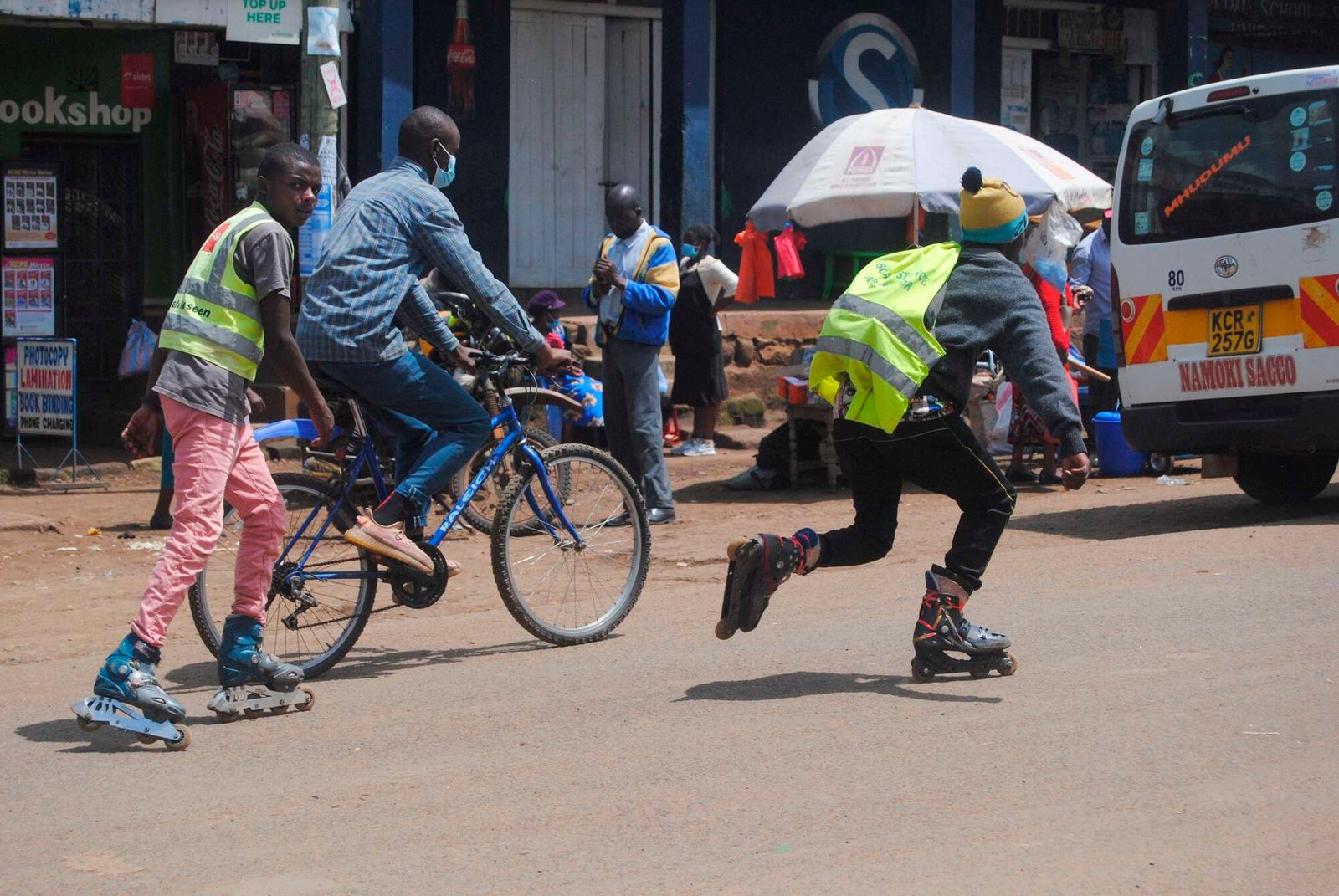[ad_1]
Economy
Sh30bn walkways, bike lanes plan to secure lives
Tuesday April 04 2023
Young men skate in the middle of the road as motorists and pedestrians pass on it in Elburgon town, Nakuru County. FILE PHOTO | NMG
Kenya will spend at least Sh30 billion annually to build walkways and bicycle lanes on all public roads if MPs approve a new Bill.
Under the Kenya Roads (Amendment) Bill, non-motorised transport (NMT) facilities will be set up on all roads in the country.
The Bill seeks to amend the Kenya Roads Act, 2007 to require all public roads to have lanes or tracks for exclusive use by non-motorised transport modes.
It further requires all public roads both in urban and rural areas to have clearly marked lanes or walkways exclusively used by pedestrians with the signage indicating non-motorised transport.
The Bill provides for the existing roads without non-motorised lanes to be upgraded, where appropriate, to have the non-motorised dedicated facilities.
The total length of tarmac roads in Kenya is 21,826 kilometres of which 30 percent have non-motorised facilities as per the road policy.
Read: NMS plans Sh1.4bn pedestrian, cycling lanes into city estates
“The cost of providing for non-motorised facilities on both sides of the road is approximately Sh10 million per kilometre according to estimates by Kenya Urban Roads Authority (Kura) engineers,” Naisula Lesuda, the sponsor of the Bill told the Budget and Appropriations Committee (BAC) during the pre-publication scrutiny.
She said the maintenance cost of the non-motorised facilities is 10 percent of its total cost of construction while the cost of providing for non-motorised facilities will be spread over a period of five years with an annual inflation rate of five percent.
“Upon enactment of this Bill, the budgetary appropriations for roads will increase by Sh30.556 billion in the first year and increase to Sh40.855 billion by the fifth year of implementation,” Ms Lesuda said.
“This is if it is implemented in five years, however, a longer period of implementation will reduce the annual required appropriations.”
She told the committee chaired by Kiharu MP Ndindi Nyoro that the development of NMT on all public roads will lower the number of deaths attributed to road accidents involving non-motorised road users as well as promoting green mobility by minimising vehicle congestion and reducing air and noise pollution from vehicles.
Data from the Economic Survey shows that the number of accidents recorded in 2021 was 4,579 people of which pedestrians were leading at 1,557 deaths accounting for 34 percent of all accident deaths.
There have been efforts to solve the problems associated with the lack of NMT facilities, especially in Nairobi City County.
The defunct Nairobi Metropolitan Services (NMS) spent Sh1.47 billion on building walkways and bicycle lanes in its non-motorised transport programme that sought to encourage walking and cycling.
The NMS which wound its operations in October last year constructed pedestrian walkways and cycling lanes on Kenyatta Avenue, Wabera and Muindi Mbingu Streets in Nairobi’s city centre.
The programme was to be expanded where the grey and red cabro paved lanes were to be constructed beyond the central business district (CBD) in Hurlingham through Uhuru Park, Jogoo Road and Westlands.
The corridors were meant to offer safety to pedestrians and cyclists and also contribute to decongestion on the roads.
Also read: Wellness on two wheelers
Data from the Kenya National Bureau of Statistics (KNBS) shows that the number of registered vehicles increased by an average growth rate of nine percent between 2011 to 2019 from 1.6 million to 3.3 million vehicles.
[ad_2]
Source link



